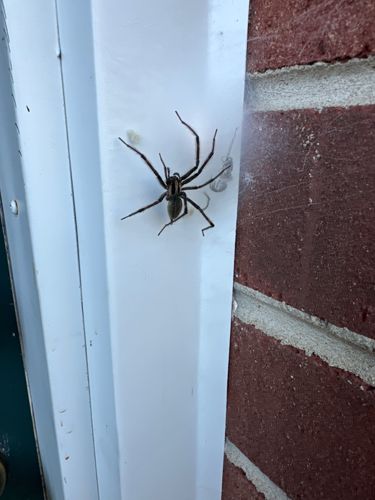Grass Spider
Scientific Name: Agelenopsis spp.
Order & Family: Araneae, Agelenidae
Size: Typically 9-20 mm for females and 10-18 mm for males (body length). They have long, slender legs that make them appear larger.

Natural Habitat
Commonly found in grassy areas, gardens, fields, and around human structures. They build distinctive funnel-shaped webs in dew-covered lawns, bushes, and between objects.
Diet & Feeding
Strictly carnivorous, feeding on a variety of insects that fall into their web, such as flies, mosquitoes, grasshoppers, and other small invertebrates. They wait at the narrow end of their funnel web for prey to become entangled.
Behavior Patterns
Grass spiders are funnel-web weavers, meaning they construct a flat sheet-like web that tapers into a funnel retreat where the spider waits. When prey lands on the web, the spider quickly rushes out, bites, and drags it back into the funnel. They are fast runners and generally non-aggressive. Females often guard their egg sacs (as seen in the image).
Risks & Benefits
Grass spiders are generally harmless to humans. Their bite is not considered medically significant, though it might cause minor localized pain or swelling. They are highly beneficial in gardens and ecosystems as natural pest control, preying on many common insect pests.
Identified on: 9/9/2025